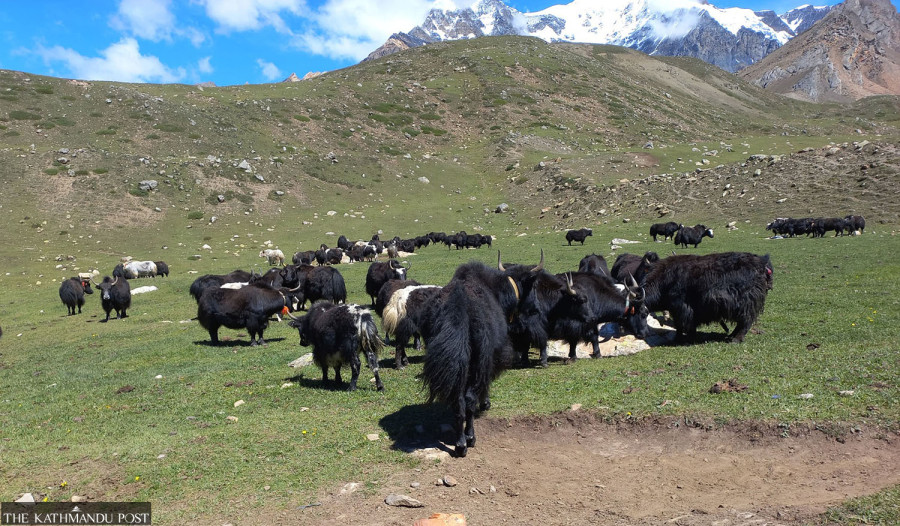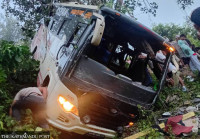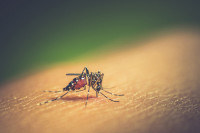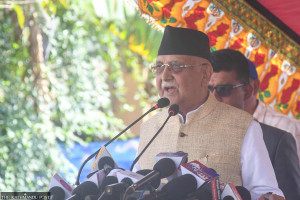Gandaki Province
Diphtheria is killing yaks in Manang highlands
The District Veterinary Hospital and Livestock Service Expert Centre has launched a vaccination drive against diphtheria in the affected area.
Aash Gurung
As many as seven yaks belonging to Kanchha Gurung died at Pipche grazing land in upper Mustang in the first week of August. The yaks, according to Kanchha, showed similar symptoms—excessive salivation, swollen throat and breathing difficulties—at the pasture land at an altitude of about 4,300 metres above sea level in Nisyang Rural Municipality-8.
“We called a veterinarian after the yaks started dying. The vet said the animals were running fever as high as 106 degrees Fahrenheit. The yaks started dying within two days of falling sick. Some even died within two hours of having high fever,” said Kanchha.
According to him, a yak’s death causes a loss of Rs50,000 to Rs150,000 to a farmer.
Pembadinji Gurung of Ghyorkang highland in Nisyang-2, which lies at an altitude of 4,600 metres above sea level, also lost six yaks to a similar disease almost at the same time. Animals belonging to the farmers of Wards 3 and 5 in Nisyang Rural Municipality also died from similar conditions. The animals had additional symptoms of swollen legs and testes.
Farmers in various pasture lands in upper Manang, a mountain district of Gandaki Province, have started to worry after their yaks started falling ill and dying. A technical team led by veterinarian Narayan Kusum, chief at the District Veterinary Hospital and Livestock Service Expert Centre in Manang, was deployed in the affected area after the centre was informed about the disease outbreak. According to Kusum, a total of 30 yaks died and around 40 others fell ill in the area.
“It was found that 12 yaks died in Ghyorkang, 10 in Aisa highland and eight others died in Tanki pasture land. We collected the nasal and rectal swabs of the sick yaks and gathered samples of the heart, lungs, liver and bone marrow of the dead animals. We suspected that the yaks died from diphtheria. The samples were then sent to the regional veterinary laboratory in Pokhara,” said Kusum.
According to Kusum, there are a total of 722 yaks in the pasture lands of Ghyorkang, Aisa and Tanki.
The veterinary team sent the samples to Pokhara on August 23 for the identification of the disease. “We again collected the samples to send them to the central veterinary laboratory in Kathmandu after the regional veterinary laboratory failed to diagnose the disease. The laboratory test in the central veterinary laboratory reported that diphtheria had caused the deaths,” said Kusum.
The District Veterinary Hospital and Livestock Service Expert Centre in Manang has launched a vaccination drive against diphtheria in the affected area following the confirmation of the disease. According to veterinarians, a ring vaccination campaign has been launched in the area to control the disease.
The veterinarians urged the farmers to restrict the movement of the sick yaks to prevent the disease from spreading. “The dead animals should be buried safely. But the carcasses were found left in the deserted area for vultures to feed on,” said Kusum.




 16.12°C Kathmandu
16.12°C Kathmandu.jpg)










